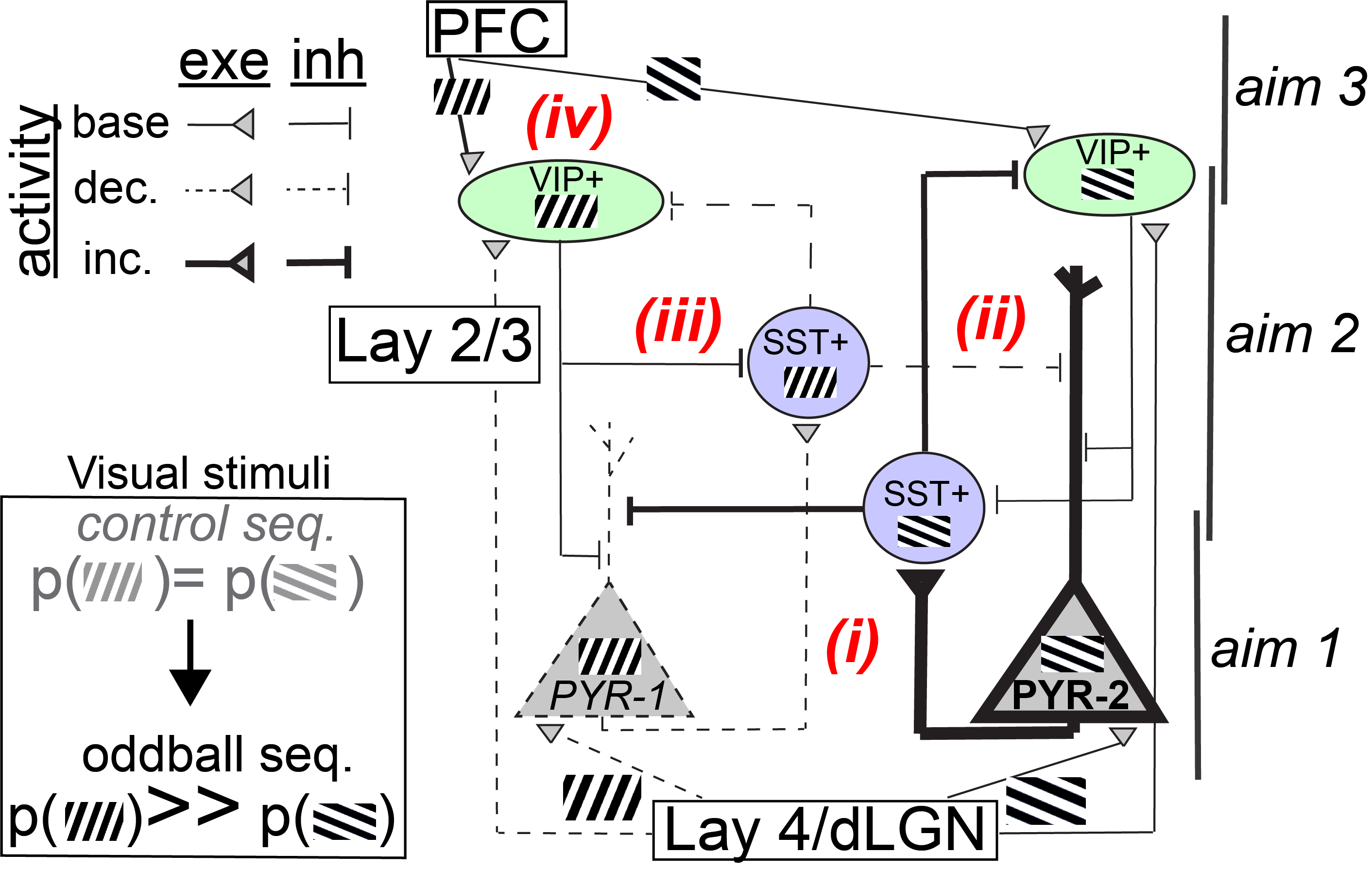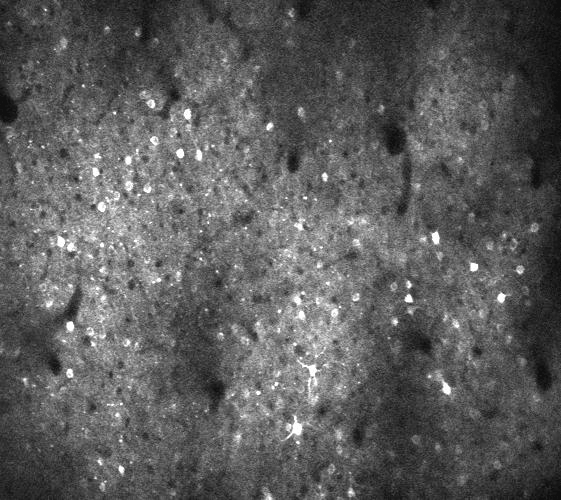
News:
Spring 2024: In collaboration with Dr. Melanie Grubisha (PITT), the Hamm lab was awarded part of a 5 year R01 from the National Institute of Mental Health to study the development of sensory cortical function across adolescence and in a schizophrenia-relevant mouse model of adolescent-period dendrite loss (Kalrn-mutants; R01MH132586. PI: Grubisha, Co-I Hamm).
Winter 2023: Dr. Jordan Hamm was accepted into the American College of Neuropsychopharmacology (ACNP) as an Associate Member.
Winter 2023: Alice Van Derveer successfully defended their dissertation, titled ““Multisensory context processing in the cortical hierarchy and the impact of a schizophrenia-relevant gene mutation”. Congrats Dr. Van Derveer!
Fall 2023: See our new paper in Cell Reports, titled Top-down input modulates visual context processing through an interneuron-specific circuit”. This work demonstrates how top-down inputs to visual cortex modulate specific populations of neurons to support the detection of unexpected stimuli.
Summer 2023: See our new paper in Current Biology, titled “Robust multisensory deviance detection in the mouse parietal associative area”. This work extends our work on deviance detection to show how it manifest across higher cortical areas, in relation to simple vs complex stimuli. Results support a generalized predictive processing framework for understanding cortex.
Summer 2023: See our new paper in Cerebral Cortex, titled “Spatiotemporal dynamics across visual cortical laminae support a predictive coding framework for interpreting mismatch responses”. Here we detail a diligent analysis of the MUA, CSD, and time-frequency characteristics of mismatch negativity-like responses across V1 layers 1-5 during an oddball paradigm. Results suggest that prediction error-like responses involve gamma and theta-band responses in layer 2/3, and decreased beta-band responses in layer 1.
Fall 2022: The Hamm Lab was awarded a five year R01 from the National Eye Institute to study how cortical circuits predict the visual world and detect deviant stimuli in the environment. “Circuits for Deviance Detection in V1” (R01EY033950)

Spring 2022: The Hamm lab presented 3 posters at the Society for Biological Psychiatry! see here, here, and here.
Spring 2022: Dr. Hamm was awarded the GSU Dean’s Early Career Award.
Winter 2021: The Hamm lab was awarded a five year R01 from the National Institute of Mental Health to study how microglia shape the development of functional neuronal circuits. “Sex differences in microglia-neuron-circuit interactions in adolescence” (R01MH128176)
Fall 2021: The Hamm lab was awarded a two-year NARSAD young investigator grant from the Brain and Behavior Research Foundation (BBRF) for a protect titled: “Transcriptomic Profiling of a Novel Subtype of Cortical Neurons Selective for Sensory Prediction Errors”
Spring 2021: New paper from Dr. Hamm on the cortical circuit mechanisms of deviance detection in V1 in the Proceedings of the National Academy of Sciences (PNAS). See here!
Winter 2020: New review paper from the Hamm lab in Schizophrenia Bulletin drawing links between common abnormalities in SST+ interneurons, theta oscillations, and feed-back processing in schizophrenia. See here!

Winter 2020: Hamm lab published a new paper in J Neuroscience Methods provides a methodological overview and set of considerations for the analysis of multineuronal ensembles in optical imaging data.
Fall 2020: Hamm lab postdoc Dr. Jordan Ross has been awarded a prestigious BRAIN initiative NRSA F32 fellowship for the project “Large-scale monitoring of circuits for adaptation and novelty detection in primary visual cortex”
ABOUT THE HAMM LAB:
The neuroscience laboratory of Jordan Hamm is located at GSU’s Neuroscience Institute and the Center for Neuroinflammation and Cardiometabolic Diseases in the Petit Science Center in downtown Atlanta.
Projects focus on understanding the cellular- and circuit-level mechanisms of sensory context processing and related schizophrenia biomarkers. We work mainly in awake mouse models, both wildtype and transgenic. Primary techniques are two-photon calcium imaging, multielectrode recordings, opto/chemicogenetics, and exploratory network analyses.
We are looking for graduate students, postdocs, and research technicians to join the lab! Please contact me directly for more information at jhamm1 (at) gsu (dot) edu (or use the contact section).
Petit Science Center in downtown Atlanta:



